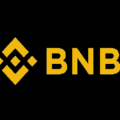In the world of cryptocurrency, Binance stands as one of the most prominent and widely used exchanges, offering users the ability to trade a plethora of digital assets. As the popularity of cryptocurrencies continues to grow, many traders and investors are drawn to Binance due to its user-friendly interface and extensive selection of coins.
However, potential users are often curious about the fees associated with the platform before they dive into the world of crypto trading. In this article, we will delve into the fee structure of Binance, shedding light on the costs and charges that users may encounter during their trading journey.
So, if you are starting to invest in crypto, you may consider visiting the Official site of the most recommended trading platform online.
The Significance of Online Platforms
Before exploring the specifics of Binance fees, it is essential to mention a valuable tool for traders – the online trading platform. This user-friendly and powerful platform has been praised for its ability to provide real-time market insights, enabling traders to make informed decisions. It is an excellent complement to exchanges like Binance, allowing users to optimize their trading strategies and potentially increase their profits. Now, let’s proceed to understand the fee structure of Binance.
Deposit and Withdrawal Fees
One of the primary concerns for users when considering an exchange is the cost of depositing and withdrawing funds. Binance, like many other exchanges, charges fees for these transactions. The fees for deposits vary depending on the cryptocurrency you wish to transfer into your Binance account. These fees are typically flat rates or may be calculated as a percentage of the deposited amount.
On the other hand, withdrawal fees are determined by the specific cryptocurrency you want to withdraw from your Binance account to an external wallet. Traders should pay close attention to these fees as they can impact the overall profitability of their trading endeavors.
Trading Fees: Maker and Taker
When it comes to actual trading on Binance, users encounter two types of fees – maker fees and taker fees. These fees apply to each trade executed on the platform. A maker is someone who adds liquidity to the order book by placing a limit order that doesn’t immediately fill, while a taker is someone who removes liquidity by placing an order that is immediately matched with an existing order on the book.
The maker and taker fees on Binance are typically based on the trading volume over the past 30 days and can vary depending on the user’s trading tier level. Generally, high-volume traders are rewarded with lower fees compared to those with lower trading volumes. It is essential to be aware of the fee structure and how it impacts your trading style, especially for day traders and frequent traders.
Binance Coin (BNB) and Fee Discounts
Binance has its native cryptocurrency called Binance Coin (BNB), which can be used to pay for trading fees on the platform. Utilizing BNB to pay for fees comes with several advantages. First and foremost, users can benefit from a significant discount on their trading fees when they choose to pay with BNB. This can be an attractive option for traders looking to reduce their overall trading costs.
Moreover, Binance often holds promotions and events that offer additional incentives for using BNB, such as discounted trading pairs and special rewards for BNB holders. As a result, BNB has become an essential asset for many traders on the platform, offering both utility and potential investment value.
Futures Trading Fees
For those interested in trading cryptocurrency futures contracts, Binance also offers a separate fee structure. Futures trading involves the trading of contracts that speculate on the future price movements of cryptocurrencies, allowing traders to go long or short on an asset. The fees for futures trading are different from spot trading and usually involve separate maker and taker fees for opening and closing positions.
Additional Fees and Charges
Aside from the fees already mentioned, Binance may impose other charges related to specific services or activities. For instance, there might be fees associated with using certain advanced trading tools, participating in token sales, or accessing premium features. It’s crucial for users to carefully review Binance’s fee schedule and terms of service to avoid any unexpected costs.
Conclusion
In conclusion, Binance is undoubtedly one of the leading cryptocurrency exchanges in the world, providing a robust platform for trading a vast array of digital assets. However, users should be aware of the various fees and charges associated with using the platform. Deposit and withdrawal fees, trading fees, and futures trading fees are some of the primary costs that traders may encounter. Utilizing Binance Coin (BNB) can be a strategic move to enjoy fee discounts and additional perks. Additionally, traders should keep an eye on potential promotions or events that may further enhance their trading experience on Binance.
